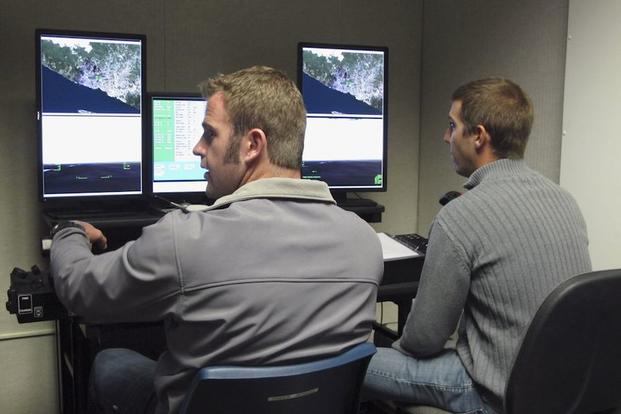PARIS -- Drone maker General Atomics plans to open a training academy in the U.S. early next year for drone pilots from allied countries, a company official said.
The San Diego-based maker of the popular Predator-series unmanned aircraft plans to announce the move in coming weeks. It is designed in part to relieve a training bottleneck in the U.S. Air Force, according to Christopher Ames, director of international strategic development for General Atomics Aeronautical Systems Inc.
"There's increasing demand for these aircraft and therefore there's increasing demand for training, and so we are starting a training academy in January of 2016 to train pilots," he said during an interview Thursday at the Paris Air Show, held outside the city at the historic Le Bourget airfield.
The Air Force, which flies such unmanned systems as the MQ-1 Predator and MQ-9 Reaper made by General Atomics, is struggling to meet surging demand for drone operators both in the U.S. and abroad, as more and more pilots and trainers leave the service due to stress.
EXODUS OF OPERATORS
Indeed, so many operators are opting to exit that the service plans on cutting the number of so-called combat air patrols by armed surveillance drones to 60 a day by October, down from a recent peak of 65 a day, despite increasing calls for the missions from both combatant commanders and intelligence officials, according to a recent report in The New York Times.
The Air Force earlier this year announced it was more than doubling monthly incentive pay from $650 to $1,500 for operators of remotely piloted aircraft who have finished a six-year service commitment. But the bonus -- designed to keep highly trained personnel in service -- only applied to a handful of airmen and apparently wasn't able to stem what has been described as an exodus of crew members.
Related Video
"Our schedules are rough," one pilot told Military.com at the time. "We fly six-day workweeks. I've had 1,500-, 1,600-, 1,700-hour years the last couple of years." He added, "I can't imagine working this schedule for another few years."
Overall, the Air Force has about 1,000 active-duty pilots for Predators and Reapers, though more than 200 additional aviators are needed. The service trains about 180 such pilots a year, but needs about 300 of them and loses about 240 due to attrition. Training units are chronically understaffed because many trainers are pulled from operational units, officials said.
EXPANDING FLEETS
General Atomics wants to help relieve this pressure in part by offering to train some of the foreign forces that currently cycle through the Air Force programs, Ames said. While the company already trains hundreds of its own pilots, "now we'd be opening the aperture to foreign customers," he said. Its aircraft are operated by such countries as the United Kingdom, France and Italy.
Predator-series drones have logged a total of 3.3 million flight hours over the past couple of decades -- with almost a third of that coming in the past year alone, Ames said.
"International fleets are growing. Demand for pilots is growing," he said. "The same thing is true with the Air Force. So we're reaching out with a lifeline. We're answering a lifeline and taking matters in our own hands to relieve the congestion that obviously is building. As more and more countries buy this, operate it, you need to train crews."
He didn't say where the new training academy will be located.
-- Brendan McGarry can be reached at brendan.mcgarry@military.com.



























